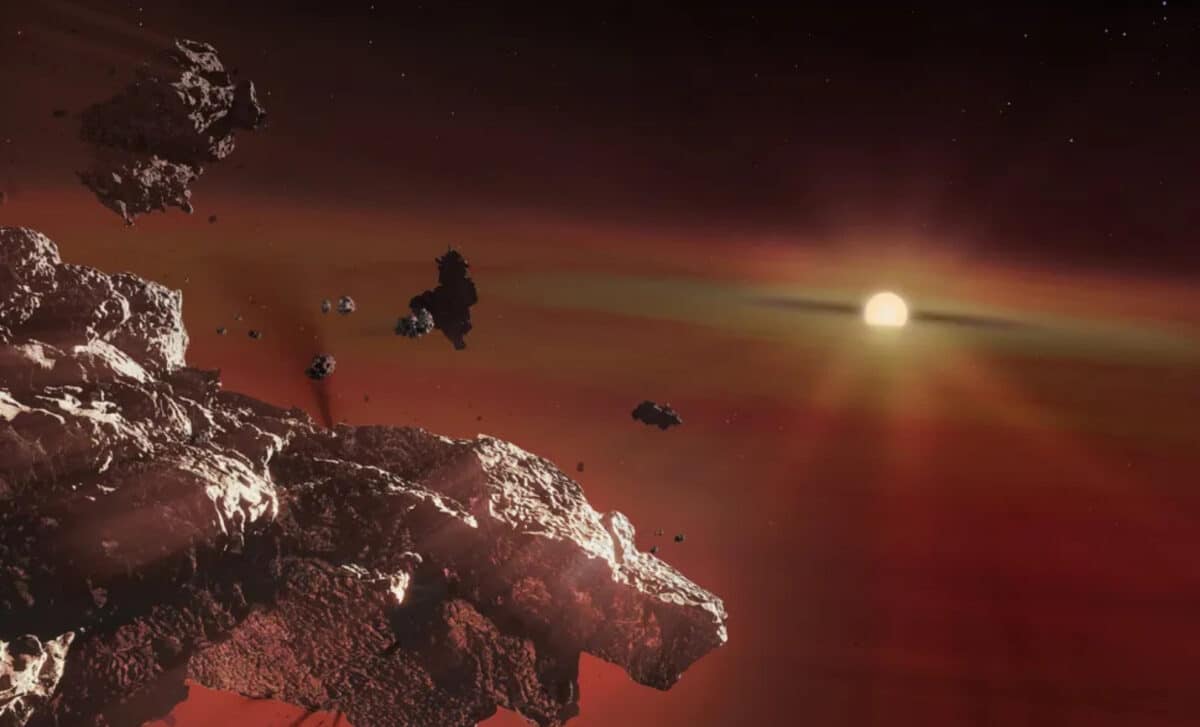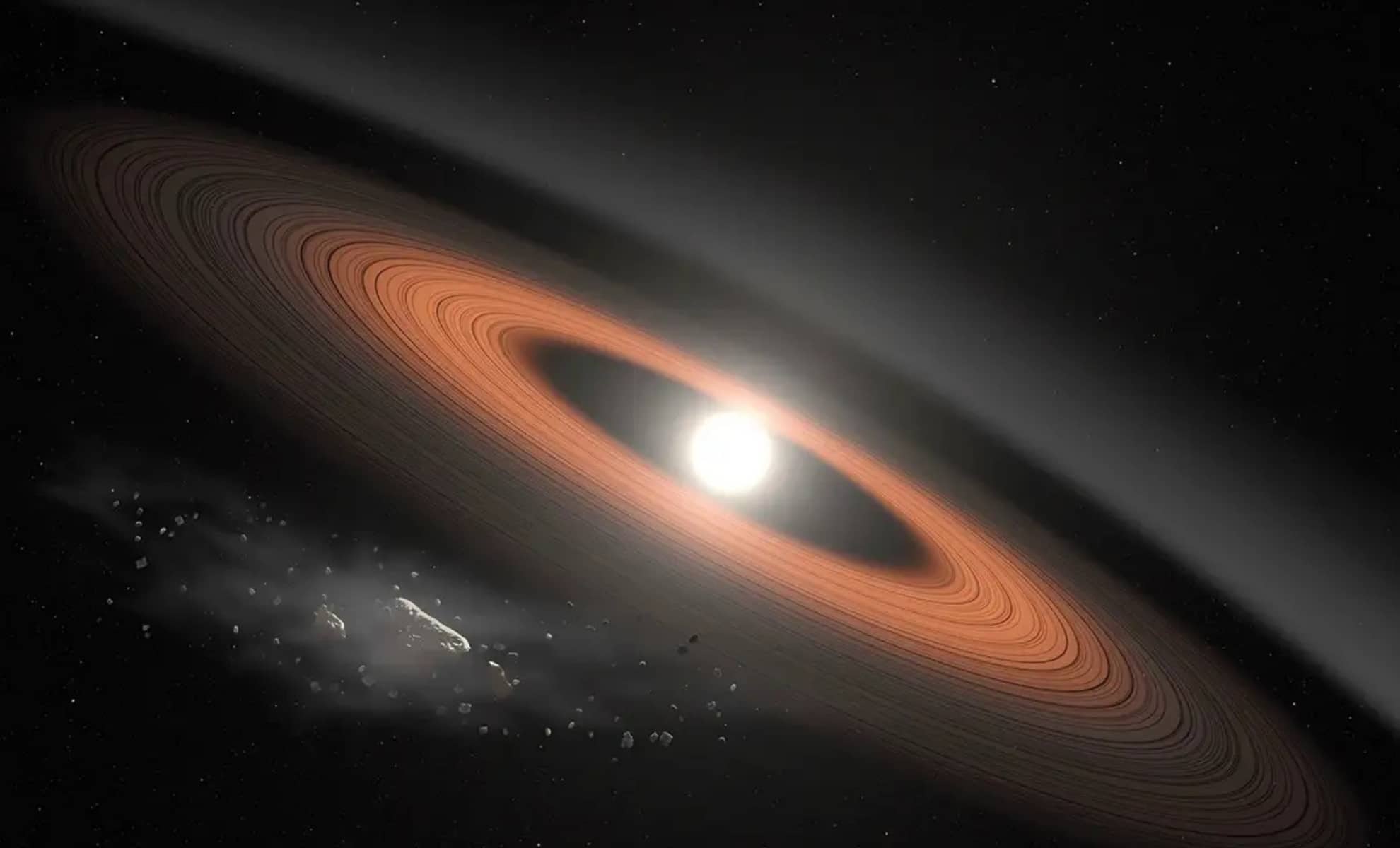The star in question, LSPM J0207+3331, lies 145 light-years from Earth and was once a sun-like star. It exhausted its fuel three billion years ago, shedding its outer layers and settling into the slow decay of white dwarfhood. But new observations show that this so-called “zombie star” is far from dormant: it’s actively devouring the remains of what may have been a rocky planet.
The discovery adds weight to the idea that planetary systems can remain unstable for eons, even after their stars die. The star’s unexpected activity could “change how we view planetary systems in their afterlife,” raising urgent questions about how long planetary bodies can persist — and how they finally fall.
Traces of a Shattered Planet
Using spectroscopic data, researchers detected a cocktail of heavy elements in the white dwarf’s atmosphere: magnesium, iron, silicon, cobalt, aluminum, and more — 13 in total. These match the typical composition of rocky bodies like Earth. Since such elements usually sink quickly into the star’s hydrogen-rich envelope, their presence at the surface means they were deposited recently.
Patrick Dufour of the Trottier Institute for Research on Exoplanets noted the anomaly. “The amount of rocky material is unusually high for a white dwarf of this age,” he said in a statement. The planetary body being consumed was likely about 120 miles wide, and the disintegration is happening piece by piece.
This is not the first time astronomers have observed white dwarfs polluted with planetary debris. What’s different here is the timing. After three billion years, this kind of activity should have stopped. The material should have long since either been swallowed or stabilized.

A Silicate-Rich Debris Disk Surrounds the Star
NASA’s Wide-field Infrared Survey Explorer (WISE) first detected an excess of mid-infrared light around LSPM J0207+3331, pointing to the presence of a surrounding debris disk. This disk is likely rich in silicates — the same material found in planetary crusts — and may have supplied the doomed object currently falling into the star.
Researchers now suspect that the destroyed body came from this reservoir, formed from leftover planetary chunks after the star’s red giant phase. Érika Le Bourdais, lead author of the study, said the accretion shows that planetary debris can remain active for far longer than expected. “Ongoing accretion at this stage suggests white dwarfs may also retain planetary remnants still undergoing dynamical changes,” she explained, according to Space.
The next step is to analyze the disk more closely. Observations from the James Webb Space Telescope could help determine its composition and total mass, shedding more light on the planetary system’s evolution and how long it has remained active.
Mystery Disruption Raises New Questions
The biggest unknown is why this event is happening now. For three billion years, the system remained quiet. Then something — or someone — woke it up. John Debes of the Space Telescope Science Institute suspects that surviving gas giant planets could be disturbing the orbits of smaller bodies, nudging them inward over time.
These outer planets, likely cold and distant, are hard to detect. Direct imaging is improbable, but the European Space Agency’s Gaia mission might be able to identify tiny movements in the white dwarf caused by gravitational tugs from unseen planets. Gaia’s first exoplanet data is scheduled for release in December 2026, offering a possible path to answers.
As Debes put it, “There’s still a reservoir of material capable of polluting the white dwarf, even after billions of years.” Something is still stirring out there — and LSPM J0207+3331 is proof that even dead stars have stories left to tell.
First Appeared on
Source link













